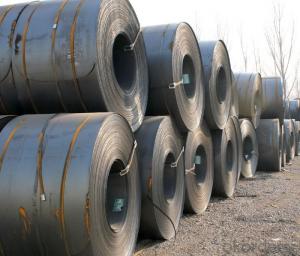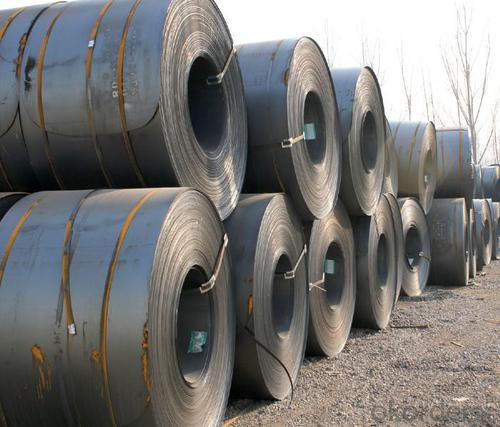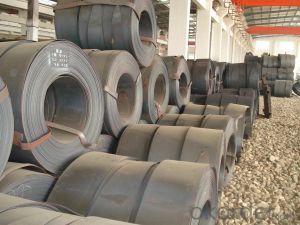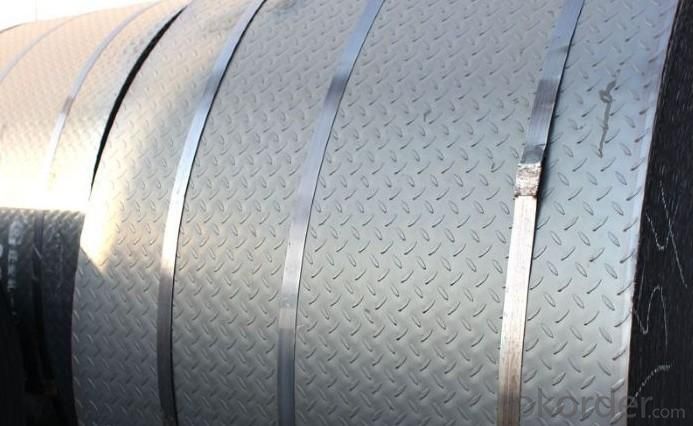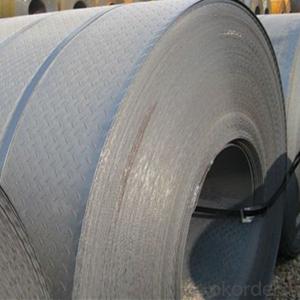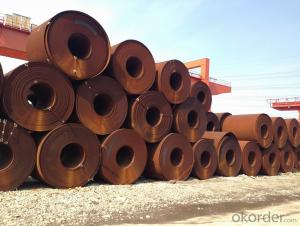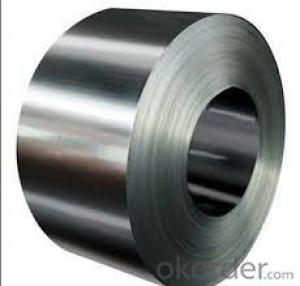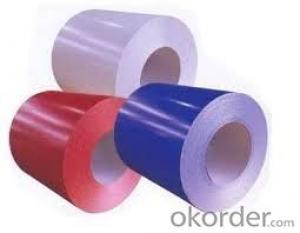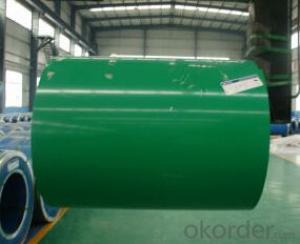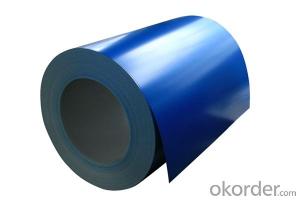Hot Rolled Steel Coil for Construction Materials
- Loading Port:
- Tianjin
- Payment Terms:
- TT OR LC
- Min Order Qty:
- 500 m.t.
- Supply Capability:
- 5000 m.t./month
OKorder Service Pledge
OKorder Financial Service
You Might Also Like
Specification
1. Product Description
Can destroy the ingot casting organization, grain refining of steel, and eliminating the defects of the microstructure, which makes steel group is close-grained, mechanical performance is improved.This improvement is mainly manifested on along the rolling direction,
So that the steel to a certain extent, is no longer isotropic body;Pouring formed bubbles, cracks and loose, can also be used in high temperature and pressure are welded together.
2. Main Features
1, cold rolled into sections to allow local buckling section, which can make full use of the bar buckling bearing capacity after;Local buckling and hot rolled steel does not allow cross section.
2, the causes of hot rolled steel and cold rolled steel residual stress is different, so the distribution of cross section also have very big difference.Cold-formed thin-walled steel cross section on the residual stress distribution is curved, and hot rolled steel or welded steel residual stress distribution on cross section is a thin film
type
3. Excellent Product Image
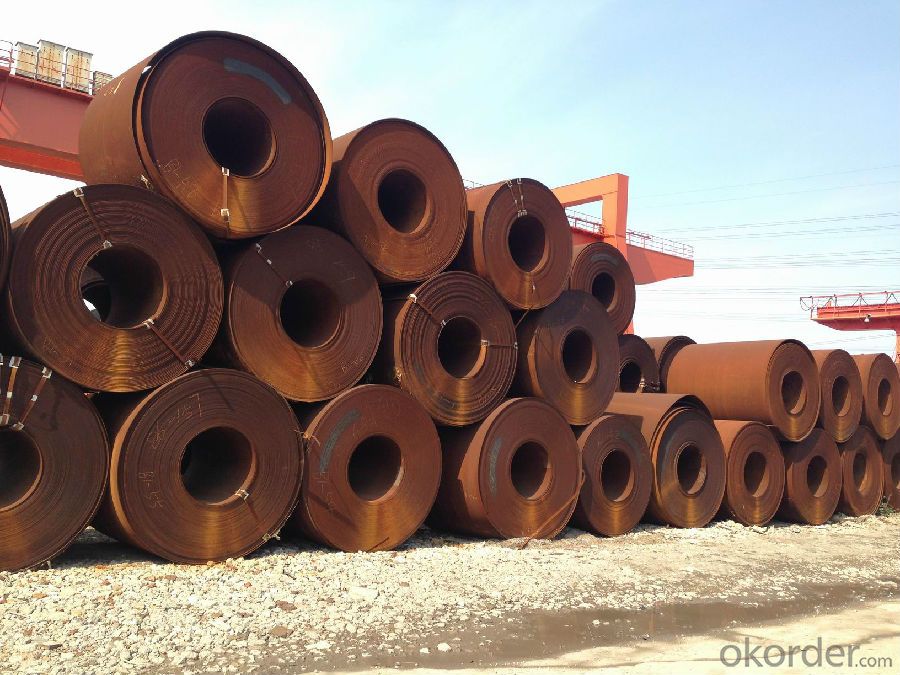
4. Application
Three, automobile structure steel
Good stamping and welding performance of high strength steel plate, used in production of automobile FRAME, WHEEL, etc.
4, hot rolled steel
General mechanical structure with carbon steel, alloy steel, tool steel, after heat treatment engineering used in the production of various kinds of machinery parts and components.
5, cold rolled plate
Used in the production of all kinds of cold rolled products, including CR, GI, width, etc.
6, steel pipes with steel plate
Has good processing properties and the compressive strength, for the production of content product 500 l filling of LPG, acetylene, and various gases under high pressure gas pressure vessel.
5. FAQ
1.Q: Do you have attended any exhibition?
A: We almost go to Canton Fair and Overseas Exhibitions every year.
2. Q: How to guarantee the quality of the products?
A: We have established the international advanced quality management system,every link from raw material to final product we have strict quality test;We resolutely put an end to unqualified products flowing into the market. At the same time, we will provide necessary follow-up service assurance.
3. Q: How long can we receive the product after purchase?
A: Usually within thirty working days after receiving buyer’s advance payment or LC. We will arrange the factory manufacturing as soon as possible. The cargo readiness usually takes 15-25 days, but the shipment will depend on the vessel situation.
Why choose us?
Pre-sale Service
1. Sample can be offered with sample charge and courier fee by buyer's side.
2. We have full stock,and can deliver within short time.Many styles for your choices.
3. OEM and ODM order are accepted, Any kind of logo printing or design are available.
4. Good Quality + Factory Price + Quick Response + Reliable Service, is what we are trying best to offer you
5. All of our products are produce by our professional workman and we have our high-work-effect foreign trust-worthy sales team.
6. We have 18 years' experience of design, manufacture and sell lingerie, we cherish every order from our honor.
After you choose
1. Count the most efficient shipping cost and make invoice to you at once.
2. Check quality again, then send out to you at 1-2 working day after your payment.
3. Email you the tracking no, and help to chase the parcels until it arrive you.
- Q: How can I arbitrate quality of steel before purchasing it??
- The quality of the alloy can be very well be judged by its appearance and lustrous surface. The more luster on the surface the more refine will the steel be. To judge its tenacity and endurance, the alloy can be subjected to a series of procedures involving stress and shock. The reaction to these processes can determine whether the steel be fit for the purpose required.
- Q: Steel is a mixture of Iron Carbon . So , is steel a metal or non - metal ?
- This Site Might Help You. RE: Is Steel a Metal or Non - Metal ? Steel is a mixture of Iron Carbon . So , is steel a metal or non - metal ?
- Q: What are the different types of coil slitting machines?
- There are several different types of coil slitting machines available in the market, each designed to meet specific requirements and preferences. Some of the common types include: 1. Rotary shear slitters: These machines use rotary knives mounted on a rotating drum to cut the coil into narrow strips. They are ideal for high-speed operations and can handle large volumes of material. 2. Loop slitters: Loop slitting machines feed the coil through a loop to maintain tension and prevent material damage during the slitting process. They are suitable for delicate materials or those prone to deformation. 3. Turret slitters: Turret slitting machines have multiple sets of slitting knives mounted on a rotating turret. This allows for quick and easy changeover between different slitting configurations, reducing downtime and increasing productivity. 4. Drag slitters: Drag slitting machines use a stationary knife and a moving clamp to hold and pull the coil through the cutting process. They are versatile and can handle a wide range of materials, including thick or heavy coils. 5. Crush slitters: Crush slitting machines use a set of opposing rollers to crush and cut the coil material. They are commonly used for softer materials or those that are difficult to cut with traditional knives. 6. Laser slitters: Laser slitting machines use a high-powered laser beam to precisely cut through the coil material. They offer unmatched accuracy and are suitable for high-end applications or materials with complex shapes. Each type of coil slitting machine has its own advantages and limitations. The choice of machine depends on factors such as the type of material, required speed, desired accuracy, and production volume.
- Q: How are steel coils used in the manufacturing of automotive fenders?
- Steel coils are used in the manufacturing of automotive fenders by being processed and shaped into the desired fender shape. The coils are first uncoiled and then sent through a series of machines that cut and shape the steel into the specific dimensions and contours required for the fender design. These shaped steel pieces are then welded or bolted together to form the final fender structure, which is later painted and installed onto the vehicle.
- Q: I am doing a experiment on mild steel soaked in sodium chlorideanyone can enlighten me about the effect of the sodium chloride in engineering term ?The mild steel specimen which I soaked in the sodium chloride has orange rust on it
- The mild steel contains a lot of Iron. The NaCl solution quickly attacks the iron content and forms rust. Over time, the solution may also cause what is called 'Chloride Cracking' of the steel. Pitting corrosion of stainless steel due to chlorides would certainly produce a rust-colored product. Passivation can be used to maintain a good corrosion resistant surface of stainless steel process vessel. There are many commercial products for this purpose. In the pharmaceutical industry, this process is often called derouging, that is to remove the buildup of iron oxides on the stainless steel process surfaces
- Q: How are steel coils processed for galvanizing or coating?
- Steel coils are processed for galvanizing or coating through a series of steps. Firstly, the coils undergo surface preparation, which involves cleaning, degreasing, and removing any rust or mill scale. This is done using chemicals, mechanical methods, or both. Next, the coils are immersed in a zinc bath for galvanizing or passed through a coating application process for other types of coatings. This ensures a uniform and protective layer on the steel surface. Finally, the coated coils are cured or dried using heat or air, after which they are ready for further processing or shipment.
- Q: How are steel coils used in the manufacturing of wind turbines?
- Steel coils are used in the manufacturing of wind turbines for various purposes, including the fabrication of tower structures, rotor blades, and other components. The steel coils are typically processed and shaped into specific forms, such as rolled sections for tower construction or sheets for blade manufacturing. These coils provide the necessary strength, durability, and structural integrity required for the efficient and reliable operation of wind turbines.
- Q: What are the different types of steel coil edge treatments?
- There are several different types of steel coil edge treatments used in the manufacturing and processing of steel coils. These treatments are done to enhance the edge quality, protect against damage, and facilitate handling and processing of the coils. Some of the common types of steel coil edge treatments include: 1. Mill Edge: This is the standard edge treatment provided by the steel mill. It is the raw edge of the steel coil that has been produced during the hot rolling process. Mill edge is typically sharp and may have some irregularities. 2. Slit Edge: Slit edge is a type of edge treatment where the coil is slit to the desired width, and the edges are then processed to remove any burrs or unevenness. Slit edge coils have smoother edges compared to mill edge coils. 3. Deburred Edge: Deburring is a process that removes any sharp or rough edges from the coil. It is done using specialized equipment or techniques to create a smoother and safer edge. Deburred edges are commonly used in applications where safety and handling are critical. 4. Rounded Edge: Rounded edge treatment involves rounding the edges of the coil to reduce the risk of damage during handling and processing. This treatment is often used in applications where the coil needs to be uncoiled or fed into machinery without causing any damage. 5. Beveled Edge: Beveling is a process where the edges of the coil are chamfered or cut at an angle. Beveled edges are used in applications where easy insertion, joining, or welding of the coil is required. The beveling process also helps to improve the strength and durability of the edge. 6. Sheared Edge: Shearing is a cutting process where the coil is cut to the desired width using high-pressure blades or scissors. Sheared edge treatment provides a clean and straight edge, free from burrs or irregularities. It is commonly used in applications where precise dimensions and a smooth edge are required. These are just a few of the different types of steel coil edge treatments commonly used in the industry. The choice of edge treatment depends on the specific requirements of the application, such as handling, processing, safety, and aesthetics.
- Q: I'm ordering a Pair of tongs(a tool used to dig quahogs in bays that scrapes the bottom constantly) and what type of metal would be the best to fabricate it, steel or stainless steel?
- S/S. We use clam rakes around here, I think they have a S/S basket with steel teeth to dig into the sand. By the way, I believe S/S is just steel with nickel added, but I could be wrong.
- Q: How are steel coils inspected for quality control purposes?
- Steel coils are inspected for quality control purposes through a series of tests and checks. This may include visual inspection to detect any surface defects, such as scratches or dents. Additionally, measurements and tests are conducted to ensure dimensional accuracy, such as thickness, width, and weight. Non-destructive testing methods, such as magnetic particle testing or ultrasonic testing, are also employed to identify any internal defects, like cracks or voids. These comprehensive inspections help ensure that steel coils meet the required quality standards before they are used in various applications.
Send your message to us
Hot Rolled Steel Coil for Construction Materials
- Loading Port:
- Tianjin
- Payment Terms:
- TT OR LC
- Min Order Qty:
- 500 m.t.
- Supply Capability:
- 5000 m.t./month
OKorder Service Pledge
OKorder Financial Service
Similar products
Hot products
Hot Searches
Related keywords
